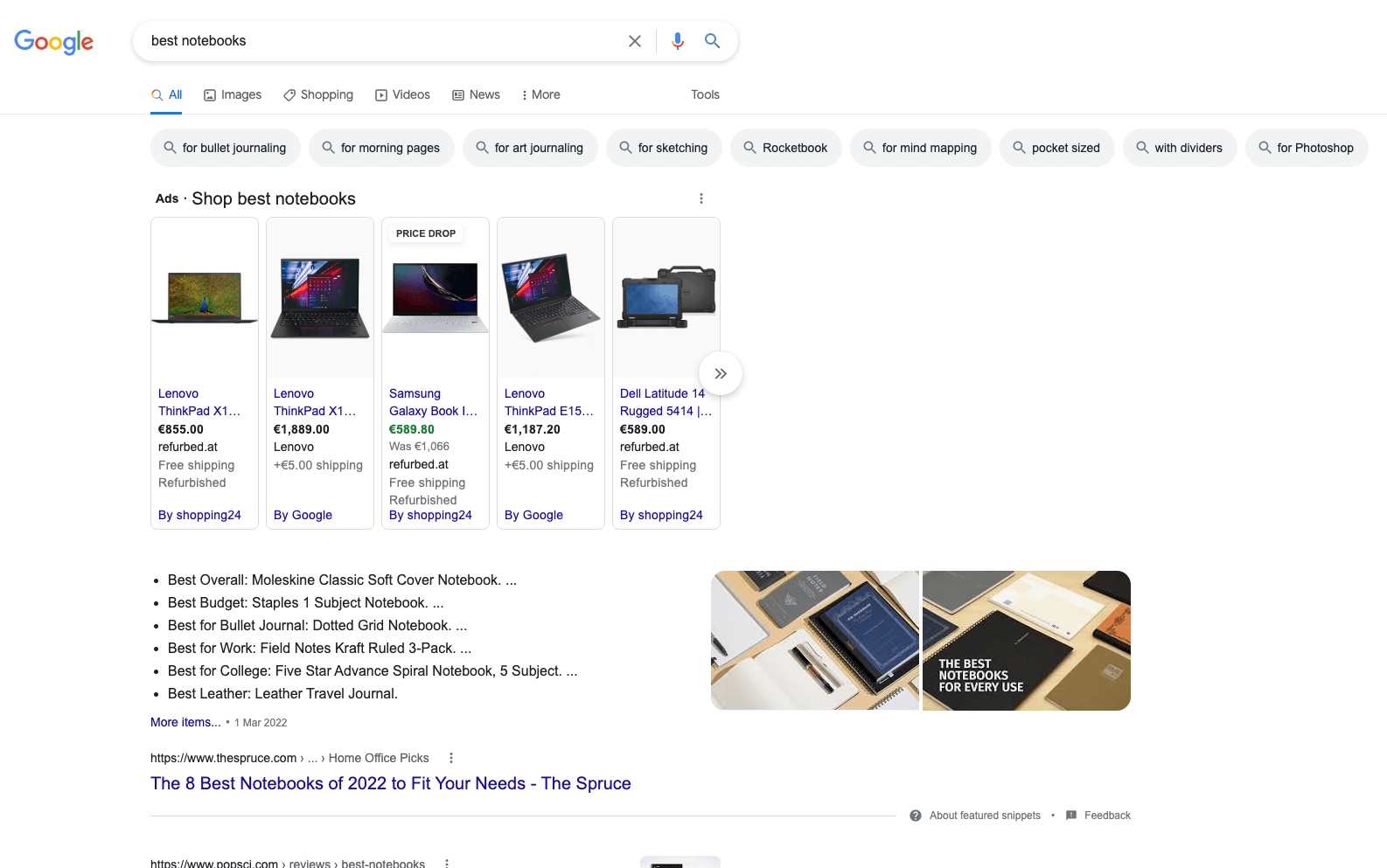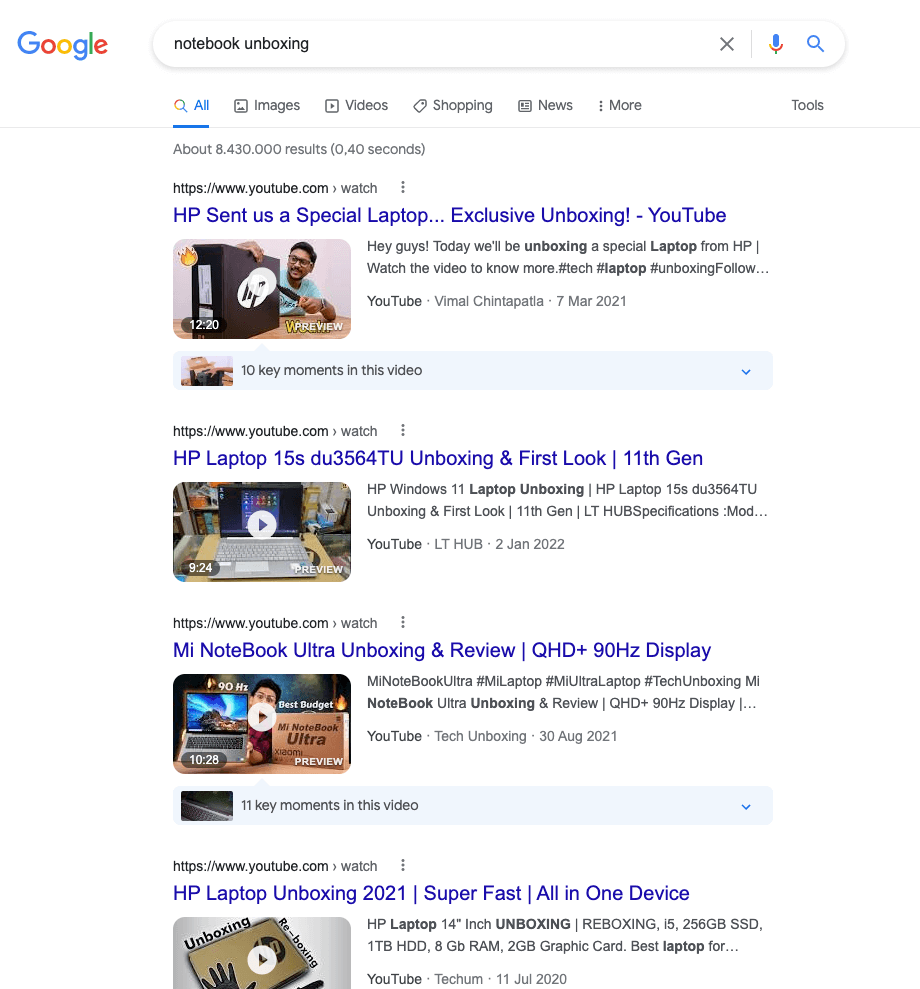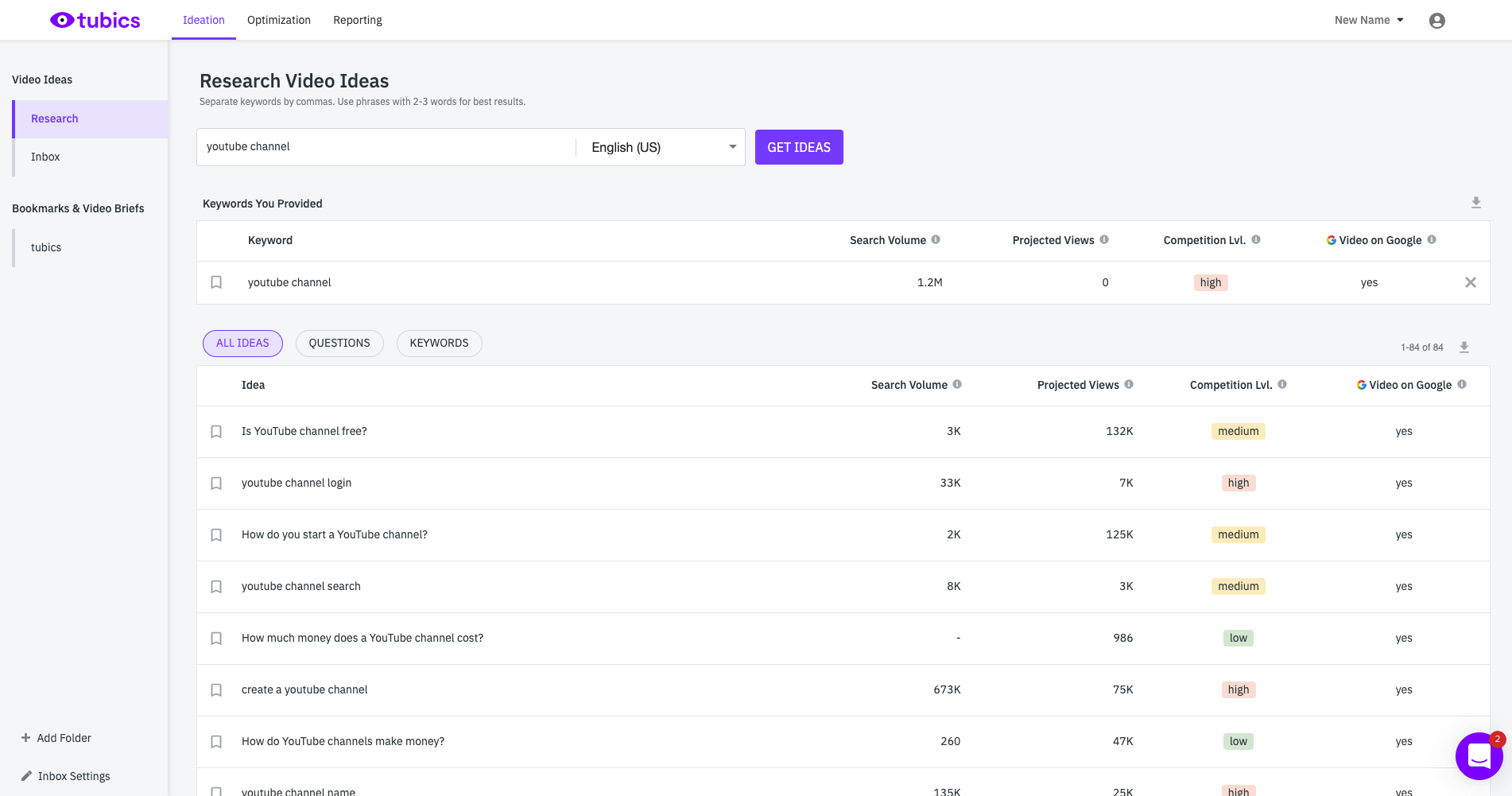
Oops! Something went wrong while submitting the form.

Last year our channel got over 170000 views from Google alone. And this wasn't luck. We optimize our videos to rank on Google using video SEO. What exactly did we do to achieve it? Let's look at it in this blog post.
%20(1).png)
- You get consistent traffic, meaning that you will get views regularly.
- To rank and get clicked on Google is often easier done with a video than with a traditional website.
- Some keywords have higher search volumes on Google than on YouTube
So how do you do it? How do you rank on Google with a YouTube video? Let's dive into this topic.
Before we try to rank a video on Google, we should first look at which video ideas have good search and traffic potential. Because not all video ideas fit the Google search.
The algorithm determines if videos generally make sense for this search term. So check if Google already shows videos before you produce them.
If we, for example, type in "best notebooks," we will only see websites.

So for this search time, it will be doubtful, if not impossible, to rank on Google with a video. On the other hand, if we type in "notebook review," we will see a couple of videos popping up. Or if we put in a "notebook unboxing," we will see only videos.

So for these search terms, it is beneficial to produce a YouTube video because we can rank on Google. But having videos show up for a specific search term is not the only thing. Before making the video, you should always check how many people search for the search term and ensure enough traffic. To do this, you can use the tubics ideation feature.
With the tubics ideation feature, you can type in any topic, brand, or product you like, put in your target language, and get ideas on what videos get searched. So, for example, let's type in “YouTube channel” and see what type of videos people search around a YouTube channel.

After the page has loaded, we can see that the keyword "YouTube channel" gets 1.2 million monthly searches but also has very high competition. But very interestingly, we have videos on Google.
So this is a keyword that is interesting to rank for on Google, not only on YouTube, but the keyword could be more specific and have less competition. So let's look at these questions and keywords that tubics also gives us so we can filter this list for questions and keywords.
We can also see some fascinating questions. For example, “how do you start a YouTube channel”? It gets 2000 searches, so way more minor, but we get a lot of views on the products there. The competition isn't as high, and we could also rank on Google. So this tool is straightforward and very intuitive for finding keywords that are interesting for YouTube as well as for Google.
All right, so we found a good search term and produced a video for that search term. How do we rank on Google?
There are pretty much only two steps.
Upload the video to YouTube and set it to public.
That's it.
Google knows about your video and will rank it, but you need to do a little more work to rank high and for the correct search terms. To optimize your video for Google search, you first need to do the same things you're already doing to optimize your video for YouTube search: Long view durations, good click-through rates, and long sessions, etc.
If you don't know about all of these things, check out our playlist on how to optimize videos for YouTube. But to rank high for a specific search term on Google, it's beneficial to do some other things.
First of all, give Google as much information about your video as possible and especially on which search terms you want to rank. You can, of course, put the keyword in the title in the description of your video. Still, you should start even earlier and put the keyword in the video script itself, especially in the first sentence of your video, but also a couple more times.
And then, after uploading the video, make sure that these keywords are correct in the subtitles; if they are not, create your own subtitles and put in these keywords so that Google knows that your video is made for these keywords. You can even try and rank for multiple keywords using one video. To do this, first of all, put all of the keywords in the video description.
But then there's an even more important thing, and this is by using chapters. Google often shows chapters of YouTube videos if you search for a specific search term. So put in subtopics of your topics as chapters of your videos to be found under these topics. And then there's a way to rank multiple times with the same video for one search term.
Check out tubics video to learn more about how to rank on Google with your YouTube videos:
.png)